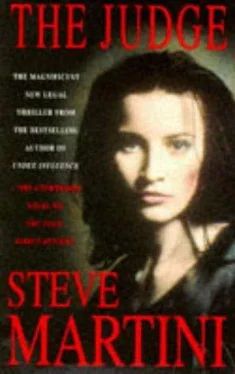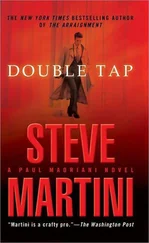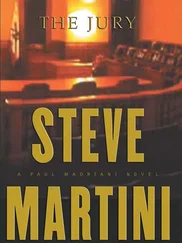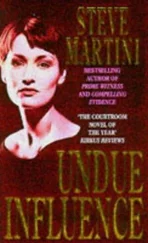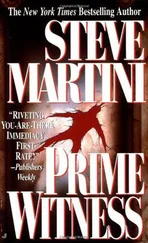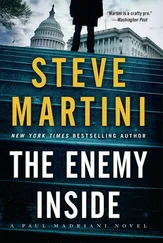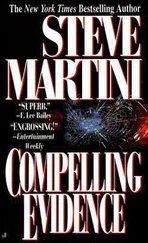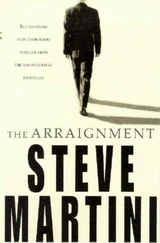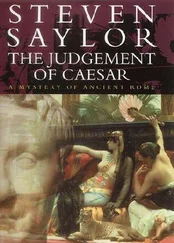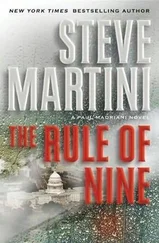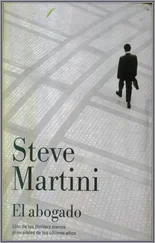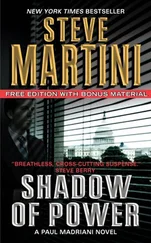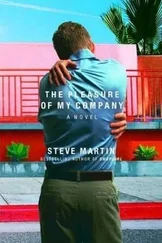Steve Martini - The Judge
Здесь есть возможность читать онлайн «Steve Martini - The Judge» весь текст электронной книги совершенно бесплатно (целиком полную версию без сокращений). В некоторых случаях можно слушать аудио, скачать через торрент в формате fb2 и присутствует краткое содержание. Год выпуска: 2011, Издательство: Penguin Group US, Жанр: Триллер, на английском языке. Описание произведения, (предисловие) а так же отзывы посетителей доступны на портале библиотеки ЛибКат.
- Название:The Judge
- Автор:
- Издательство:Penguin Group US
- Жанр:
- Год:2011
- ISBN:нет данных
- Рейтинг книги:4 / 5. Голосов: 1
-
Избранное:Добавить в избранное
- Отзывы:
-
Ваша оценка:
- 80
- 1
- 2
- 3
- 4
- 5
The Judge: краткое содержание, описание и аннотация
Предлагаем к чтению аннотацию, описание, краткое содержание или предисловие (зависит от того, что написал сам автор книги «The Judge»). Если вы не нашли необходимую информацию о книге — напишите в комментариях, мы постараемся отыскать её.
The Judge — читать онлайн бесплатно полную книгу (весь текст) целиком
Ниже представлен текст книги, разбитый по страницам. Система сохранения места последней прочитанной страницы, позволяет с удобством читать онлайн бесплатно книгу «The Judge», без необходимости каждый раз заново искать на чём Вы остановились. Поставьте закладку, и сможете в любой момент перейти на страницу, на которой закончили чтение.
Интервал:
Закладка:
This is a necessary mechanism for the state to show since they now know that Acosta never went near the stable. That was Lili’s province. She is particularly concerned by this, and as the trail of the hair is developed, I can see her physically recoil in the row directly behind her husband, just beyond the railing. She gives me a look, a pained expression.
“This is possible?” asks Kline. “This secondary transfer?”
“Oh, yes. Hair of that kind, in the quantities that I’m talking about, when a horse is shedding, is extremely pervasive. You couldn’t help but to track it into your home. Even if you brushed yourself off carefully, I would think that I could find significant traces of it where you lived.”
“Even if the person changed their clothing after riding or leaving the stables?” says Kline.
“It’s possible,” says Stinegold. “It’s likely that they would carry some of it in their own hair, or on some rougher surfaces of the skin. It’s very difficult to get rid of.”
“That leads us to the next question,” says Kline. “Did you in fact find traces of horse hair that matched the hair removed from the blanket used to wrap the body of Ms. Hall?”
“I did.”
“And where did you find these?”
“Three locations,” he says. “In the apartment of the decedent, Brittany Hall. In the residence of the defendant, Armando Acosta. And from the trunk in the defendant’s county-assigned vehicle as well as the passenger compartment of that car.”
Kline plays this for effect, a proper period of silence to accent the significance of this finding, before he anticipates our attack. He has Stinegold explain that the hair came from a stable frequented by the defendant’s wife, and that it was possible that it was picked up by the defendant on his clothes. He then concedes that hair is not one of those elements of physical evidence that is conclusive in its provenance. It is not like fingerprints, to be matched, in this case, to a specific horse.
“Still,” says Kline, “based on your scientific knowledge and experience, were you able to form any conclusions regarding the hair found on the subject blanket, and that found in the defendant’s residence and his vehicle?”
“In my professional opinion,” says Stinegold, “the specimens of hair taken from the blanket matched in all microscopic characteristics, color, texture, structural surfaces, and thickness the samples of hair combed from various items of furniture and carpeting at the defendant’s home and his vehicle.”
“In your professional opinion were they the same?”
“In my professional opinion they were,” says Stinegold.
Hair and fibers may not be definitive elements like fingerprints, but at this moment it seems to produce a quantum shift of momentum in the jury box that is nearly palpable. It is something you gain from experience in a courtroom, the perception that if you are to survive, particular evidence demands a response.
There are several things that are not helpful to the state regarding trace evidence, and Kline has made the mistake of trying to ignore them, so on cross examination I start with these. The first is the metallurgy report.
“Mr. Stinegold, did you not find microscopic scrapings of precious metal on the edge of the coffee table in Brittany Hall’s apartment, near the point where the victim’s head made impact?”
“There were some,” he says.
“Why didn’t you talk about these during your direct examination by Mr. Kline?”
“I wasn’t asked,” he says.
“Fine. Then perhaps I should ask now. Were these significant?” If he says “yes” it compounds his avoidance of the issue on direct, so Stinegold says, “No.”
“The scrapings, in your opinion, weren’t significant?”
“No.”
“Why not?”
“We examined them and determined that they were probably old, something that could have been deposited on the table months before the murder.” He spouts some garbage about the bloodstains being on top of the metal, which he quickly abandons when pressed.
“Can you tell the jury what these scrapings were composed of?”
“Traces of gold, twenty-four karat, with some alloys.”
“Something from a piece of jewelry, perhaps?”
“Perhaps,” he says.
“But not significant?”
“Not in my view,” he says.
“Then perhaps you can explain to the jury why you examined every piece of gold jewelry belonging to my client?”
“Just to be thorough,” he says.
“Just to be thorough?” I ask.
“Right.”
“And in being thorough did you take microscopic scrapings of each piece of my client’s jewelry for comparison with the scrapings found on that table?”
Stinegold nearly pouts. “What we could find.”
“Move to strike as not responsive. Stinegold would have the jury believe that Acosta discarded the incriminating piece, when there is no evidence of this.”
Radovich sustains my motion.
“Did you or did you not take microscopic scrapings from each piece of my client’s jewelry for comparison with the scrapings found on that table?”
“We did.”
“And did you subject those samples to metallurgic analysis?”
“Yes.”
“And did you find that the metal on that table matched any of the scrapings from my client’s jewelry?”
“No,” he says.
“It did not match?” I turn with a look of wonder toward the jury.
“No,” he says.
“Oh. So I can assume that we would have heard about it during your direct examination if there had been a match?”
“Objection. Calls for speculation,” says Kline.
Not in the jury’s mind. They are now wondering why Kline has hidden this. Stand up and take a bow, fool.
“Rephrase the question,” says Radovich.
“Happy to, Your Honor. Mr. Stinegold, tell the jury, isn’t it a fact that, in your mind, these metal scrapings didn’t become old and insignificant until after you failed to identify a match with Mr. Acosta’s jewelry?”
“That’s not so,” he says.
“But you have absolutely no scientific basis for your judgment that the scrapings on that table were old?”
“We believed they were,” he says.
“What is this, an article of faith?” I ask him.
“Badgering the witness,” says Kline.
I ignore him. “I asked you about a scientific basis. Did you have one?”
“No.”
“Thank you. So, based solely on the scientific evidence, on what we know about these metal scrapings, that they were found near the point of impact with the victim’s head, and that they did not match any of the jewelry belonging to the defendant, in your professional judgment wouldn’t this be evidence that could be viewed as tending to exonerate my client? Tending to show that he is not guilty?”
“Objection. That’s a matter for the jury,” says Kline.
“Sustained,” says Radovich. “I think you’ve made your point,” he says.
I turn next to the numbers game, the carpet fibers presumably from Acosta’s vehicle. I press Stinegold on the dye lots, asking him if he can tell us how many vehicles GM made that year that might have used the same carpet from the same supplier. He has no idea, so when I ask him if he would be surprised if that number were in the thousands, he is forced to admit that it is a possibility.
“Still,” he says, “not all of those vehicles would use carpet of the same color or dye lot.” He looks at Kline with some satisfaction as he says this.
I press him on the county fleet, the fact that the motor pool purchases cars in lots, several at a time from the same manufacturer, and that these might roll off the assembly line in sequence.
“Assuming that this might be so,” I say, “is it possible that vehicles with the same color and representing the same dye lot might be found in that motor pool?”
Читать дальшеИнтервал:
Закладка:
Похожие книги на «The Judge»
Представляем Вашему вниманию похожие книги на «The Judge» списком для выбора. Мы отобрали схожую по названию и смыслу литературу в надежде предоставить читателям больше вариантов отыскать новые, интересные, ещё непрочитанные произведения.
Обсуждение, отзывы о книге «The Judge» и просто собственные мнения читателей. Оставьте ваши комментарии, напишите, что Вы думаете о произведении, его смысле или главных героях. Укажите что конкретно понравилось, а что нет, и почему Вы так считаете.
